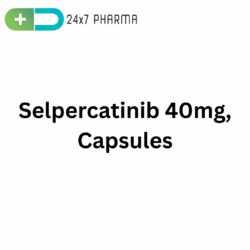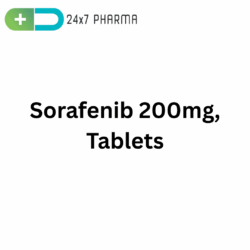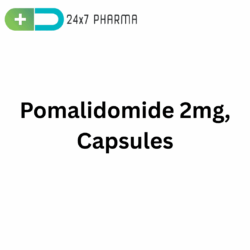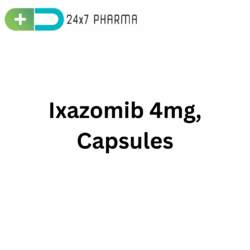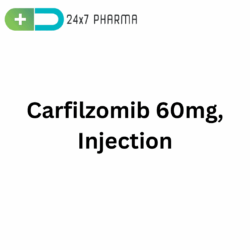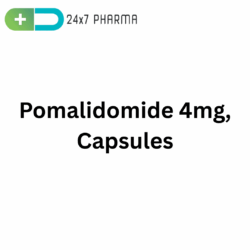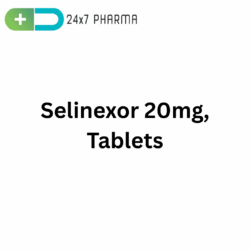LuciSelin 20mg, Selinexor Tablets
Selinexor, a new oral selective inhibitor of nuclear export (SINE), is the active ingredient in the prescription drug LuciSelin 20mg. It is used mainly for the treatment of multiple myeloma and certain types of lymphoma. Developed to combat treatment-resistant cancers, Selinexor represents a significant advancement in targeted oncology.
What is LuciSelin 20mg?
LuciSelin 20mg is a chemotherapeutic drug designed to treat relapsed or refractory multiple myeloma and diffuse large B-cell lymphoma (DLBCL). It works by interfering with cellular transport mechanisms, selectively targeting cancer cells while sparing normal ones. As a first-in-class SINE compound, Selinexor is distinct from traditional chemotherapy and is administered orally.
How It Works / Mechanism of Action
Selinexor inhibits the XPO1 (exportin-1) protein, which is responsible for transporting various tumor suppressor proteins (TSPs) from the nucleus to the cytoplasm. In many cancers, XPO1 is overexpressed, leading to excessive nuclear export of TSPs, rendering them inactive.
By blocking XPO1:
- Selinexor causes accumulation of TSPs in the nucleus, restoring their anti-cancer activity.
- Promotes cancer cell cycle arrest and apoptosis (programmed cell death).
- Minimally affects normal cells due to their lower dependence on XPO1 pathways.
- This mechanism makes Selinexor effective against cancer cells that are resistant to conventional treatments.
How to Use / Indications
LuciSelin 20mg is approved for use in:
Relapsed or Refractory Multiple Myeloma (RRMM):
- used in conjunction with dexamethasone, usually following four or more previous treatments.
Relapsed or Refractory DLBCL (not otherwise specified):
- used on people who have had at least two systemic treatments in the past.
- These indications target hard-to-treat patients who have failed standard therapies.
How to Take / Dosage
Standard Dosage (Multiple Myeloma):
- Selinexor 80 mg (usually four 20mg tablets) taken orally once weekly, along with dexamethasone.
- Dosage may vary based on combination therapy and patient’s clinical profile.
Administration Tips:
- Swallow whole with water; do not crush or chew.
- Can be taken with or without food.
- Take at the same time each day.
- Ensure proper hydration and monitor for nausea and other side effects.
Other Dosage Information
Depending on the indication, response, and tolerance, alternative dosing regimens may include:
- 60 mg or 100 mg weekly doses
- Bi-weekly schedules in some combination therapies
- Dose adjustments for side effects like fatigue, thrombocytopenia, or nausea
- Always follow the oncologist’s prescription for personalized dosing.
Side Effects
Like all anticancer drugs, Selinexor has several side effects. Common and serious side effects include:
Very Common (>10%):
- Fatigue
- Nausea and vomiting
- Anorexia
- Thrombocytopenia (low platelets)
- Anemia
- Hyponatremia (low sodium levels)
- Diarrhea
- Weight loss
Less Common but Serious:
- Neutropenia (low neutrophils)
- Infections due to low white blood cells
- Dizziness
- Cognitive dysfunction or confusion (rare)
Management:
- Supportive care like antiemetics for nausea, growth factors, or electrolyte supplements may be necessary.
- Depending on the degree of toxicity, dose reductions or interruptions can be necessary.
Storage
- Store LuciSelin tablets at room temperature (15°C–30°C).
- Keep the medicine in the original container, tightly closed, and away from moisture.
- Keep out of reach of children.
- Do not use expired medicine.
Benefits
LuciSelin offers several clinical benefits in heavily pretreated cancer patients:
- Novel mechanism offers a treatment route where others have failed.
- Oral administration provides convenience compared to IV chemotherapy.
- Prolongs progression-free survival in RRMM and DLBCL.
- Improves overall response rates, even in refractory settings.
- Can be combined with other drugs like dexamethasone, bortezomib, or pomalidomide.
Prescription
- LuciSelin 20mg is a prescription-only medicine.
- Prescribed only by qualified oncologists or hematologists.
- need regular monitoring, liver and kidney function testing, and baseline blood counts.
Interaction
Drug-Drug Interactions:
- CYP3A4 inhibitors or inducers: May alter the metabolism of Selinexor.
- Antiemetics (ondansetron, olanzapine): Often co-prescribed to manage nausea.
- Dexamethasone: Used in combination; ensure dosage coordination.
Avoid:
- Alcohol (may worsen dizziness or nausea)
- Live vaccines (in immunocompromised patients)
- Herbal products (e.g., St. John’s Wort)
Food Interactions:
No significant food restrictions, but consistent administration with or without food is advised.
FAQs
Is LuciSelin a chemotherapy drug?
Yes, but it works differently from traditional chemotherapy by targeting nuclear export.
Can LuciSelin cure multiple myeloma?
No, but it can help manage the disease and extend survival in relapsed cases.
Can it be taken at home?
Yes, since it’s oral, but under medical supervision with regular follow-up.
How long is the treatment duration?
Depends on response and tolerability; may be taken until disease progression or unacceptable toxicity.
Conclusion
LuciSelin 20mg (Selinexor), a groundbreaking advancement in oncology, offers patients with DLBCL and multiple myeloma who have relapsed or are resistant new hope. Its novel mechanism of action targeting nuclear export pathways makes it uniquely effective where other therapies have failed.


